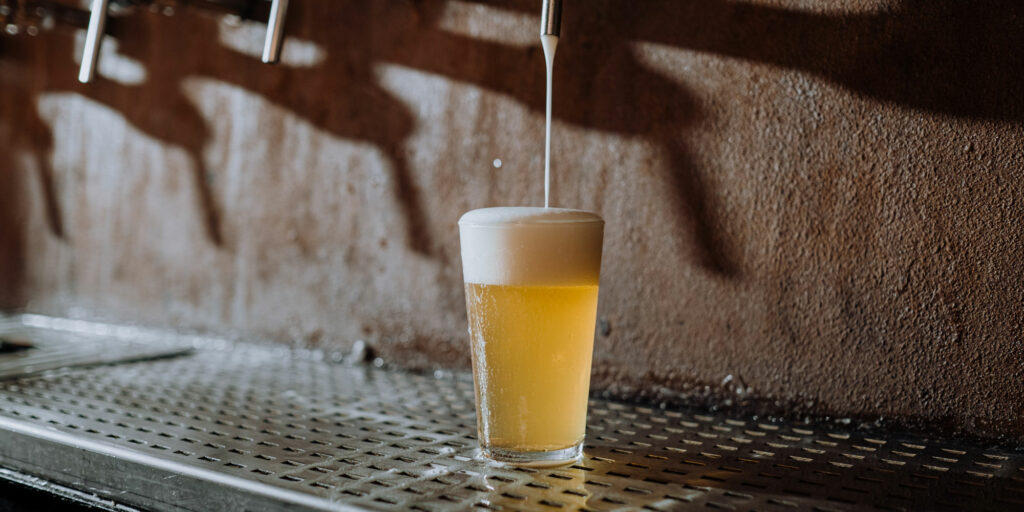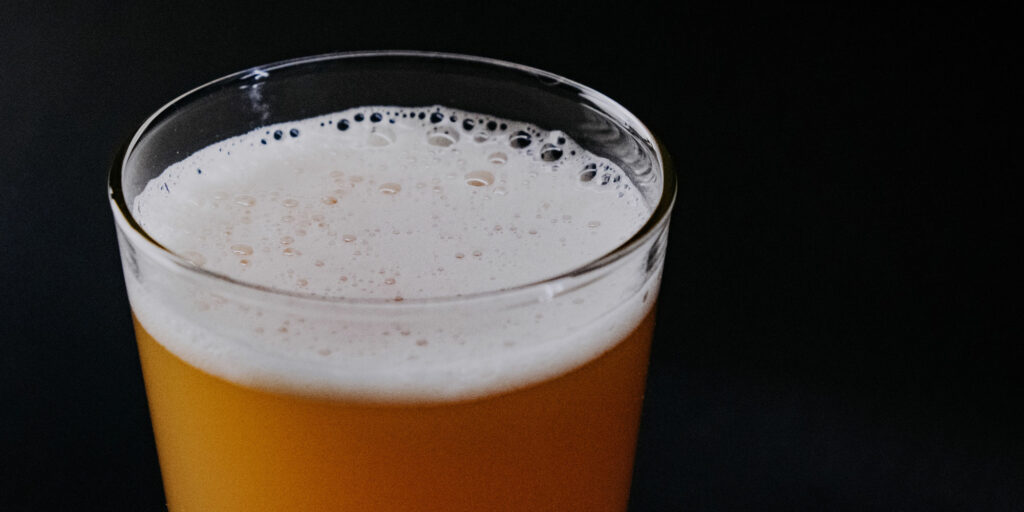Creating haze in beer for Modern Pale ales is a desired visual attribute for many craft beer drinkers. You want it to maintain stability. The molecule size of the protein needs to be large enough to be seen but not too large that it will drop out of suspension, making the beer clear. Proteins and Polyphenols are critical to a stable haze in beer, with stability being the key point.

How does haze happen?
Yeast contributes less to haze in beer; it’s not just the style of yeast that will create the haze. It’s mainly the proteins in the malt and polyphenols from dry hopping.
More recent data from Omega labs indicates that some yeast strains are better at promoting this haze than others. The haze is not due to yeast cells remaining in suspension, which are relatively large, but due to secondary effects yet to be fully elucidated. Such as secreted protein and cell wall mannoproteins complexing with the polyphenol and protein from malt and hops.
This research classified strains as either haze positive or haze neutral based on the ease of haze production. London Ale 3 (genetically very similar to Lallemand Verdant & AEB New England) was classified as haze positive. In contrast, Vermont/Conan (similar to Lallemand New England) was classified as haze neutral. The effect is strain-specific rather than format (dry or wet).

To get the haze you want.
The point at which you dry hop is essential for creating haze. Four days in seems to work best for haze production. Dry hopping at the start of fermentation seemingly has the opposite effect. Haze is undoubtedly possible in New England, but it may be harder to achieve. I would look to use Lallemand Verdant or the Juicy New E from AEB rather than the Lallemand New England strain.
Yeast Flocculation is vital to look at as it describes how the yeast behaves when fermentation is complete. The yeast cells will want to floc together and either rise to the top of the fermenter or sink to the bottom. The rate at which they do this process of bonding with other yeast cells is called flocculation. If you use yeast to create part of the haze; you will want to use a mid to low-flocculating yeast so it remains in suspension.
Colloidal haze can be achieved with dry hopping during active fermentation. Achieved through high dry hopping rates. The polyphenols from the hops combine with protein in the beer and form a haze.
You will get great flavour from yeast in suspension, and many styles are dependent on yeast haze for taste. (e.g. the Belgian Witbier or German Weiss). No doubt the heavy grist of high protein grains contributes to this style, but the yeast does carry a lot of the flavour.